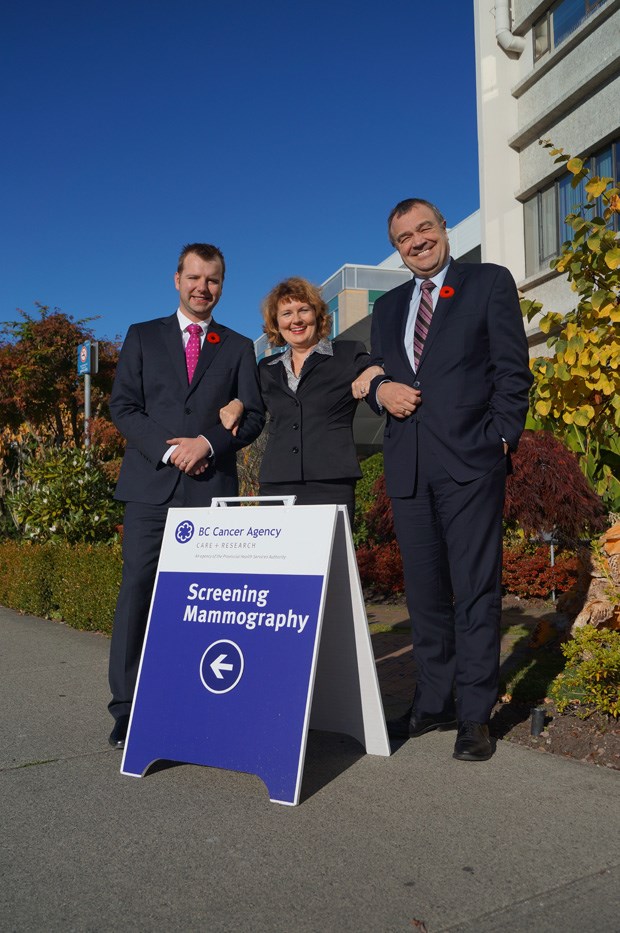A major step toward improving breast cancer prevention and treatment was taken by the Richmond Hospital Foundation last week as it procured new state-of-the-art diagnostic equipment with a donation from the Canadian Breast Cancer Foundation BC/Yukon via the Nite of Hope.
Over the next two years CBCF BC/Yukon will redirect up to $435,000 from the 2014 and 2015 Nite of Hope charity galas to the hospital foundation in order to buy a new ultrasound machine as well as biopsy equipment and software.
“For the hospital it means we can provide a higher quality level of care to more patients,” said Natalie Meixner, the foundation’s president and CEO, after the three parties signed a letter of understanding on Oct. 28.
Normally the funds from Richmond’s Nite of Hope are put toward cancer research, but, because the hospital has been identified by the province to become a breast cancer screening and treatment hub, the need for more equipment was paramount.
“It’s the first time the hospital foundation has done something like this and it speaks volumes about the Nite of Hope and the CBCF for funding research but also investing in this equipment,” said Meixner.
Nite of Hope chair Rob Akimow said knowing the donation will be used directly in Richmond gives the upcoming event an even greater meaning. “The biggest difference here is this is something people can literally touch, see and feel. This is something that can help people right now in the community.”
The province has already purchased a new digital mammography unit at a cost of $630,000. With the additional equipment, Meixner said the new hub will provide the best screening available.
She also noted digital archives can be filed, making comparisons between mammograms easier to look at. Also, the files can be emailed to patients.
With the hub, it is hoped that women who are battling the disease will not have to trek to various locations around the Lower Mainland to get treatment as the hospital will be able to provide everything from initial screening to treatment and care.
As it stands the mammography screening program in Richmond has the highest participation rate — 63 per cent for 50-69 year-old women — among the province’s 16 health service delivery areas. The provincial rate is 54 per cent, as of 2011.
According to Nicholas Locke, the vice-president of business development at CBCF BC/Yukon, the target screening rate should be 70 per cent and women should be screened every two years.



